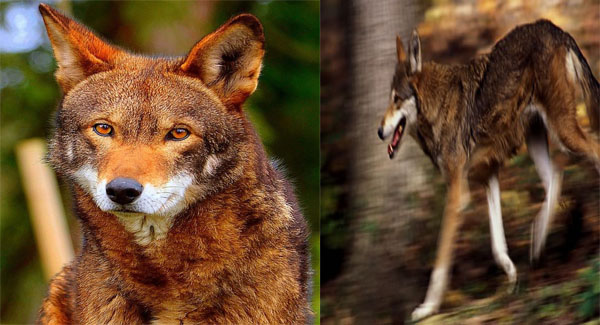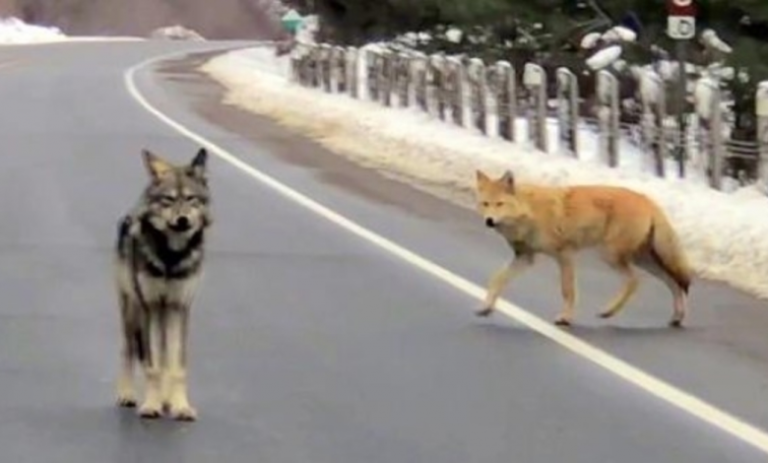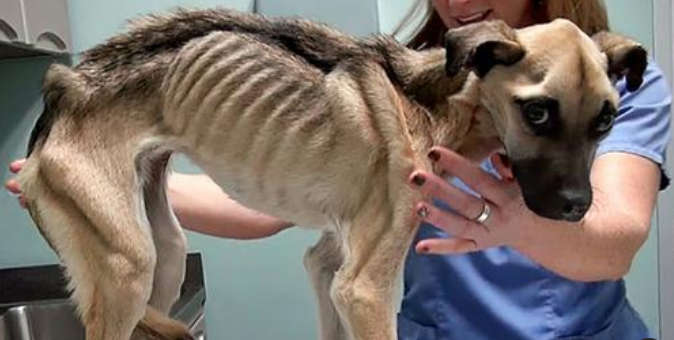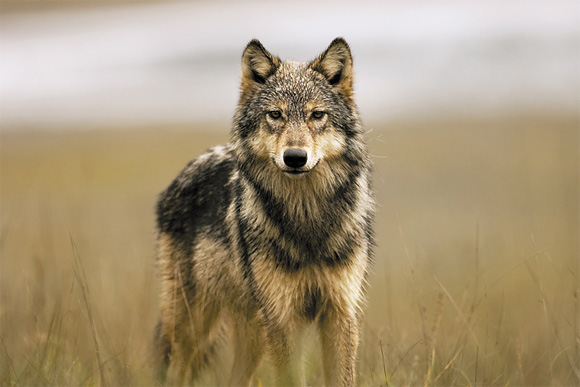Litters of Endangered Red Wolf Puppies Born in North Carolina Zoo
Two broods of endangered red wolf puppies have been born in a zoo in North Carolina, much to the delight of staff and visitors.
The North Carolina Zoo shared pictures and videos of the newborns on Facebook and Instagram in a post on May 9.
Red wolves are native to North America, and in terms of size and stature they are somewhere between gray wolves and coyotes. They measure around 53.5 to 65 inches long and weigh between 44 and 85 pounds, depending on sex.
Named for their characteristic reddish fur, these wolves originally roamed between Pennsylvania and the Midwest and Central Texas. However, in the past hundred years, their populations have crashed spectacularly, causing the wolves to now be classified as “critically endangered” on the International Union for Conservation of Nature’s Red List.

This population decline was mainly due to intensive predator control programs and habitat losses in the 1960s.
“People have killed them for generations,” Will Harlan, Southeast director for the Center for Biological Diversity in North Carolina, previously told Newsweek. “They were targeted in extermination campaigns throughout the 20th century. By 1980, red wolves were declared extinct in the wild.”
Around 20 red wolves may be left in the wild, and they live only in the Alligator River National Wildlife Refuge in eastern North Carolina, in large part thanks to the conservation efforts of the U.S. Fish and Wildlife Service and captive breeding programs like that at the North Carolina Zoo.
“Both litters were born behind the scenes as a part of the Zoo’s contributions to the @zoos_aquariums American Red Wolf SAFE Program,” the zoo said in the caption of its announcement post.
“As you see in the video, during their 24-hour checkup, the pups are visually checked to ensure they appear healthy and hydrated. They are checked for heart murmurs and a cleft palate to ensure they have the suckle reflex so they can nurse properly. Each pup is weighed, sexed, and identified by its white blaze chest patch. The veterinary staff checks the litters every two weeks to ensure everyone remains healthy!” the caption said.
A few days later, on May 11, the zoo shared more pictures of the puppies.
“DYK [did you know] all red wolves under human care are potential candidates for release to the wild?” the caption said. “Puppies born at the North Carolina Zoo are housed in a private area to reduce their acclimation to humans. This is done to give them the best chance for survival in the wild.”
Efforts to restore the wild population of red wolves in the U.S. face several challenges, including the illegal poaching of the few remaining wild individuals.
“The U.S. Fish and Wildlife [Service] led a successful reintroduction program in eastern North Carolina, and the population of red wolves grew to 150 wolves by 2010,” Harlan said. “But then political pressure, illegal management and agency inaction caused the program to fall apart. Fortunately, the program—and the wolves—are starting to bounce back, but…gunshot remains a leading cause of death for red wolves.”

The reintroduction of these wolves is important for the local ecosystem. “Without them, deer, raccoon and rodent populations have significantly increased, leading to increased disease, collisions with automobiles and agriculture damage,” Harlan said.
If their populations are restored, they can help to rebalance the other species across their range.
“As apex predators, they control populations of rodents, deer, raccoons and opossums,” Harland said. “They reduce crop damage from deer, rodents and raccoons and help protect declining bird and turtle species. Red wolves also control invasive nutria populations, which wreak havoc on local ecosystems and economies. They also hold ground from the migration of Eastern coyotes.”
He continued: “It can also strengthen law enforcement to help prosecute and deter poachers. It can improve outreach and coexistence strategies in the red wolf recovery area, and it can create additional red wolf recovery areas within its historic range.”






